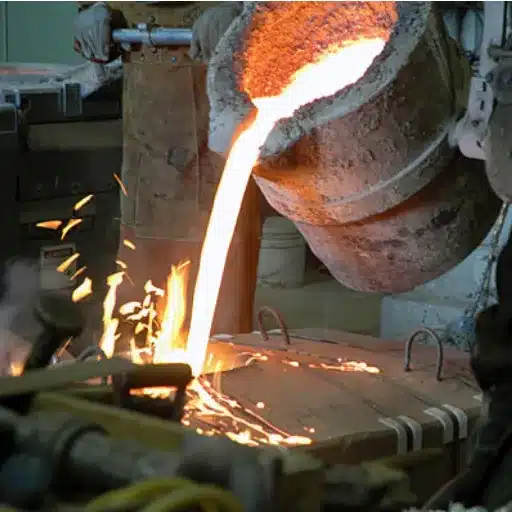Understanding the plumbing system components is critical for every home or business since they all rely on these systems working properly. Plumbing systems comprise various components, but perhaps the two most fundamental, and commonly mistaken, parts are pipe couplings and pipe fittings, as they tend to perform similar functions. Knowing the distinctions can help you avoid costly expenditure of time and resources, as well as alleviate frustration during repairs or installations. This guide discusses the differences in design, functionality, and application between pipe couplings and pipe fittings so that you can make decisions based on logic rather than plumbing myths. This post seeks to highlight the aspects that, whether you are dealing with it personally or professionally, will help you understand the differences between pipe couplings and fittings and why every distinction is crucial.
What are pipe couplings, and how do they function in plumbing systems?
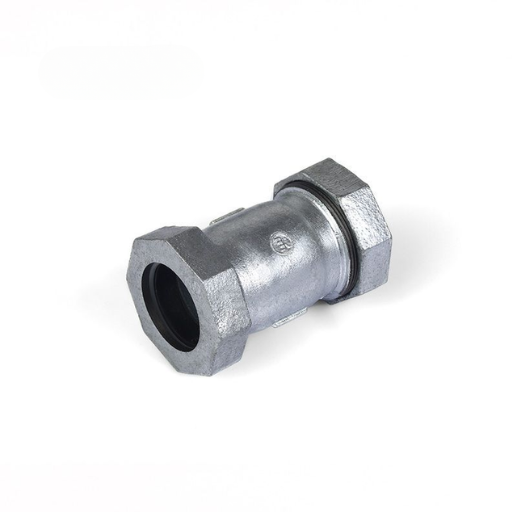
Pipe couplings are used as direct connections to join two pipes together in a plumbing system. Their basic purpose is to provide a secure connection devoid of leakage between pipelines, which can be of different dimensions. They are also used to fix broken pieces of pipes or extend the length of pipelines. Couplings are available in the form of slip, threaded, and compression styles, which make them applicable with different materials and piping like PVC, metal, or copper pipes.
Types of Pipe Couplings and Their Applications
Pipe couplings are fundamental in contemporary plumbing systems as they aid and provide answers to numerous problems that arise in the processes of installing and maintaining various pipes. The most popular types include compression couplings, slip couplings, and threaded couplings.
- Compression Couplings
These types of couplings are ideal for maintenance and emergency reconnections. They streamline the process of adding and removing parts from the system without major alterations to the pipeline. Compression couplings provide a sealing function, using rubber gaskets for tightening and preventing leakages, making them perfect for high-pressure systems.
- Slip Couplings
Slip couplings serve a particular purpose and are used specifically for pipe repair. Their design permits slipping between two portions of a pipe, which allows for more precise placement. This type of coupling is especially useful in instances where the surrounding pipes need to remain undisturbed but the segment is required to be removed.
- Threaded Couplings
Threaded couplings are those that join pipes by means of engaging corresponding threads and thus fastening one pipe to the other. They are widely used in the construction of domestic and industrial frameworks for metal or PVC piping, where dependable service for an extended period is required.
Strength and Durability
The construction of pipe couplings combines multiple materials, each selected for its strength and intended use. For example, stainless steel couplings are suitable for more severe conditions because they resist corrosion excellently, whereas high-grade PVC couplings are lighter and appropriate for low to medium-pressure water systems. Innovations in material science mean modern couplings can now withstand pressure ratings between 150 PSI and over 6,000 PSI.
Benefits of Modern Plumbing
Selecting the proper type of pipe coupling aids in effective installation and helps prevent leaks while increasing the life of the plumbing system. Couplings also support systems across a diverse range of industries, from residential water supply to industrial processes. Because of their adaptability, advanced sealing capabilities, and ability to reduce maintenance costs, Couplings are essential for ensuring safety in pipeline operations.
How pipe couplings create secure connections in pipe systems
Sufficient connections on pipes are made through couplings that withstand high pressure, temperature, and other external conditions using sophisticated mechanisms. For instance, a gasket seal is placed on a groove between two metal housings. This guarantees a high-pressure seal. Threaded and compression coupling fosters sustained bonds that endure thermal expansion or vibration-induced shifting.
Old data suggests modern couplings, depending on type and use, support 150 to over 1,000 psi. Industrial systems often employ couplings with ductile iron or stainless steel due to their enduring resistance to corrosion. Furthermore, numerous pipe couplings are known to undergo strict tests to comply with industry standards such as ISO or ASTM, ensuring dependability and consistent results. In general, pipe couplings are optimized to balance strength and flexibility, forming secure fittings on numerous plumbing systems and pipes.
What exactly are pipe fittings, and what role do they play?
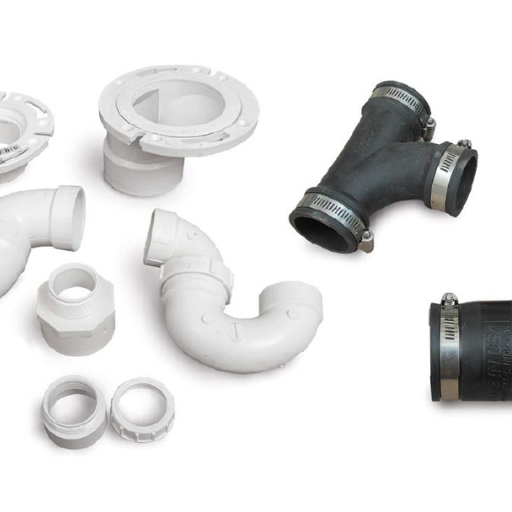
Pipe fittings are used for the division or control of flow and are essential in conjunction with various other parts in a piping system. Moreover, they help to join various pipes, change how fluid flows in and out of the system, modify the size of pipes, and close off pipelines. Elbows are used for directional change of flow, tees are for splitting or combining flow, while couplings serve to connect two pipes. Pipe fittings play a crucial role in the effective functioning and strength of plumbing and piping systems, finishing works in residential areas, commercial spaces, and even for heavy industrials.
Comprehensive definition of pipe fittings in plumbing and piping
Different kinds of pipe fittings are made for very specific purposes, and their knowledge is necessary for any plumbing or piping system. The following are the commonly used types of fittings:
- Elbows: They can be further divided into 45-degree and 90-degree elbows, which correspond to the elbow shape bend in it, additionally, they can also be custom-made to a specific angle. They help in changing the direction of flow, rather critical in layouts where pipes need to curve without disruption.
- Tees: Designed as a dual intersecting or branching system that allows splitting or combining fluid flows within a piping system. Efficiently used in both liquid and gas systems for competent fluid stream merging or splitting.
- Couplings: Couplings are used to join two pipe sections together. A good example is a slip coupling that serves for pipe repair by restoring broken or leaking portions.
- Reducers: Primarily utilized for joining pipelines of different diameters, serving very often in smoothing transition zones to maintain consistent flow rates.
- Caps and Plugs: Undifferentiated for the purposes, these are designed to seal the unutilized pipe ends for leakage prevention or to cap unused outlets in systems that might expand.
Materials Used in Pipe Fittings
Pipe fittings are created from different materials depending on the specific application’s needs:
- Copper fittings: Very durable and corrosion-resistant. Commonly used in water distribution systems.
- PVC fittings: Easily affordable, lightweight, and perfect for housing plumbing.
- Stainless steel fittings: Fittings that require great strength, corrosion resistance, and durability for industrial or commercial applications.
- Brass fittings: Used mostly in hot water systems because of their great thermal conductivity and resilience.
- Cast iron and ductile iron fittings: Usually used in heavy-duty piping systems for sewage or stormwater piping.
Market Trends in Pipe Fittings
The construction boom across the world, along with the latest technology changes, has affected the demand for pipe fittings. For example, urbanization and the development of pipe fittings infrastructure have steadily grown as they operate in the global market. Recent years’ industrial data states that the market for pipe fittings was approximately $15 billion, and it is predicted that it will grow at a compound annual growth rate (CAGR) of over 5 percent in the upcoming decade.
Moreover, there is a steady market for eco-friendly, high-efficiency plumbing systems, such as smart pipe fittings with monitoring and leak detection technology have changed.
Recognizing the types, functions, and materials of pipe fittings helps to design efficient systems for modern infrastructure projects, sustainably meet the operational needs and advancements of evolving developments.
Various categories of pipe fittings and their functions
Pipe fittings are important for controlling and managing plumbing operations, since they allow for redirection, connection, and flow control. This is a broad overview of the types of pipe fittings, uses, and functions:
- Elbows
They’re used for directional flows and for changing flow direction, usually at 45 ° or 90° angles. Elbows are vital to a system’s design in fixing areas with space restrictions or structural design that requires changing pipe direction. For example, 90° elbows are common in residential plumbing systems, while 45° elbows are widespread in large water pipes to minimize pressure loss.
- Tees
A Tee fitting has a T-shaped design that permits a single pipe to bifurcate into two distinct lines or the reverse. Tees are widely used in branch pipelines for effective water or gas flow distribution. For example, Stainless steel tees are used in high-pressure applications due to their durable nature.
- Couplings
Couplings provide secure, leak-proof connections for two pipes. Rigid couplings are permanently fixed to pipe connections, while flexible couplings are useful in less stable pipes prone to too much vibration/movement. Couplings are made from PVC or CPVC materials and are commonly applied in water supply pipelines because of their low cost and resistance to corrosion.
- Reducers
Reducers serve the purpose of connecting pipes of different diameters and easing the transition of flow size. Concentric reducers preserve straight through flow, while eccentric reducers are better at preventing air pockets in horizontal pipes. Precision flow control is key in a good number of processes in industries like chemical processing.
- Unions
Union fittings allow for easy disconnection of pipes and replacement or maintenance, unlike couplings. Unions make the maintenance of plumbing easier, simplifying the installation and repair of system components such as valves and other body parts.
- Caps and Plugs
Caps and plugs are used to seal the ends of pipes, also preventing fluid or gas leakage. While plugs seal more threaded design openings of pipes, caps are placed at the ends of open pipes. These fittings are critical in high-pressure systems.
- Valves
Valves control regulating, stopping, or starting the flow of fluids in a piping system. Each has its own different purposes for valves: ball valves, gate valves, and check valves. A case in point is using ball valves for greater efficiency in on/off controls and check valves, preventing backflows for system efficiency.
Pipe fittings are being manufactured from copper, PVC, stainless steel, and even modern composites, depending on the temperature, pressure, and chemical needs of the operating environment. These components serve their fundamental purposes, but with the addition of sensor-embedded fittings for real-time monitoring, they have also evolved to aid in modern smart system designs, which optimize new infrastructure projects. These systems further strive for efficiency and sustainability.
How fittings direct and control the flow in pipe systems
Pipe fittings provide an important function with respect to guiding and regulating the flow within the piping systems, as far as efficiency and dependability are concerned. Common types of fittings include elbows, tees, and reducers, which are meant to turn the flow, split it into two or more branches, or change the diameter of the pipe. As an example, elbows come in 90-degree and 45-degree angles and are used to change the direction of flow in a smooth way without creating pressure spikes. Tees are important in splitting or combining flow, where both actions can happen at the same time.
Flow rate, pressure rating, and dynamics change during the selection of fittings. For any given fitting, there is a minimum requirement in pressure for it not to leak or break when seated onto a high-pressure system (psi choke fitting). Moreover, the amount of flow resistance, also known as minor losses or pressure drop coefficient, is then higher with old designs obstructing the movement, but smoother with newer ones, enabling smoother transitions.
The performance of fitting processes has undoubtedly improved due to contemporary materials and innovations. The product of industrial stainless steel and high-grade PVC now has better resistance to corrosive, high temperatures, and chemical exposure, enabling it to be used for industrial purposes. In addition, modern fittings with flow control, such as ball and check valves, allow for precise regulation of flow and backflow prevention, thereby improving system performance and efficiency. Additionally, modern studies feature newer technologies, such as intelligent fittings that can continuously measure flow and pressure, as well as provide valuable information for maintenance and operational efficiency.
What are the fundamental differences between pipe couplings and pipe fittings?
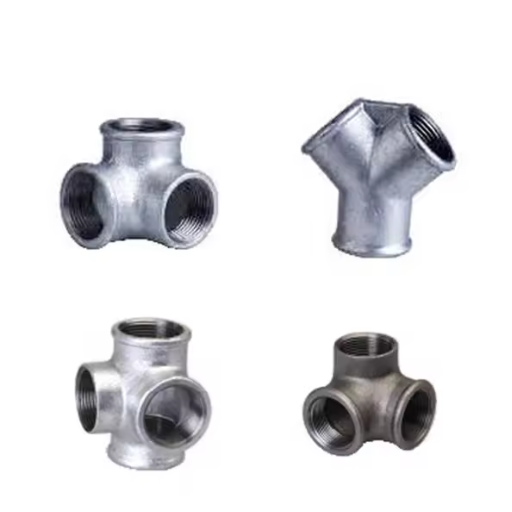
Pipe couplings and pipe fittings have distinct functions in piping systems. Couplings are meant only for joining two pipes together or for extending or repairing portions of the pipe. Their use is quite algebraic in that it tends to be sole in purpose, involving joining,g, and has a cylindrical design that is relatively straightforward.
Pipe fittings are a lot more advanced than couplings because they enable changing the direction of flow, controlling flow within a system, and merging multiple pipes. Some common types of pipe fittings to mention include elbows, tees, reducers, and caps, all differing in purpose beyond simple attachment.
The basic distinction is in the purpose they serve: couplings are solely meant to mechanically join two pipes, while a fitting serves a multi-functional purpose of modifying and controlling the entire piping system.
Design and structural differences between couplings and fittings
The first thing you will notice about couplings is that they are designed compactly and simply because their primary concern is making sure that the pipes are securely joined. They are also cylindrical and come in two styles: full and half couplings. Pipes of the same diameter are connected using full couplings, while half couplings are used for branching pipes with a smaller diameter. Many couplings have threaded or slip-on designs, which serve to speed up installation and enhance sealing efficacy.
Fittings, in contrast, demonstrate a more sophisticated design, which is aimed at addressing the numerous distinct functions they are built for. They can greatly alter the direction of flow (elbows), manage multiple connections (tees and crosses), or change the piping system’s diameter (reducers). Elbows, for example, are available in angled variants like 45 degrees or 90 degrees and are designed for seamless directional shifts. To add on, reducers help change pipe diameters while maintaining smooth transitions in flow direction.
The aforementioned students make use of modern materials for manufacturing both couplings and fittings, which include stainless steel, copper, and PVC. The selection of these materials is based on applicable pressure, temperature, and chemical requirements. These components are aligned with the applicable industrial standards, such as ASTM or ASME with regard to structural strength so that the fidelity and safety are maintained, even under high-pressure systems. Most stainless steel is used in applications that require resistance to corrosion, while other types of materials, like PV C are preferred in lightweight and cost-sensitive applications and are suitable for less demanding environments.
Functional comparison: connection vs. direction/control
During the analysis of the functionality of pipe fittings, two main types appear: those pertaining to connection and those pertaining to direction or control. Connection fittings include couplings, unions, and adapters, and these are specifically designed to connect pipes of the same or different material and diameter. An example is Threaded and welded couplings that are extensively utilized in many industries with high security and no leakage joints. Threaded couplings are preferred in low-pressure systems.
On the other hand, direction and control fittings include elbows, tees, and valves, which help in controlling the direction of flow of liquid as well as the pressure. Elbows are used to change the direction of flow and come in various sizes, such as 45 and 90 degrees. Tees are used for branching in pipelines. Control fittings such as ball valves and Gate valves can be used to control the flow, thus isolating particular sections in order to conduct maintenance or troubleshooting. According to industrial data, with the proper direction/control fittings, the pressure loss can be reduced by almost 30%, enhancing the efficiency of the system tremendously. This comparison shows how these two types of fittings serve different but complementary functions in piping systems.
Installation and maintenance differences between pipe couplings and fittings
With regard to installation, pipe couplings present an easier and faster option than the provided fittings. Joiners are built to connect two pipes of the same or different diameters using some form of compression, threading, or push-fit coupling, which may be accomplished with less effort during installation. As such, they are well-suited for repairs, system expansions, or other modifications. In a study reported in piping system efficiency, installations that utilized couplings instead of traditional fittings were reported to perform up to 40% faster.
On the contrary, other fittings such as elbows, tees, and reducers tend to be more intricate and require exact alignments while additionally providing secure sealing to maintain a system’s integrity. The addition of specialized tools such as welders exacerbates the problem by extending core installation activities. Inspections and maintenance are especially critical in avoiding problems due to corrosion or leaks within welded connections.
From a maintenance view, replacing or modifying a coupling does not usually involve lengthy system downtimes. For example, with quick release couplings, operators are able to disconnect and reconnect sections of the machine with so much ease that it reduces the maintenance downtime. Any fitting, on the other hand, often requires more manual and time-intensive work. For instance, in a rigid system, removing or replacing a faulty tee tends to involve cutting it and then welding the piped sections, which takes additional time and adds costs.
Both components are essential components of piping systems. However, knowing the differences between them can enhance decision-making for certain given project specifications, along with the desired flexibility for operations. Selecting the right piece can improve system performance and decrease operational costs over time.
How do pipe unions compare to pipe couplings and standard fittings?
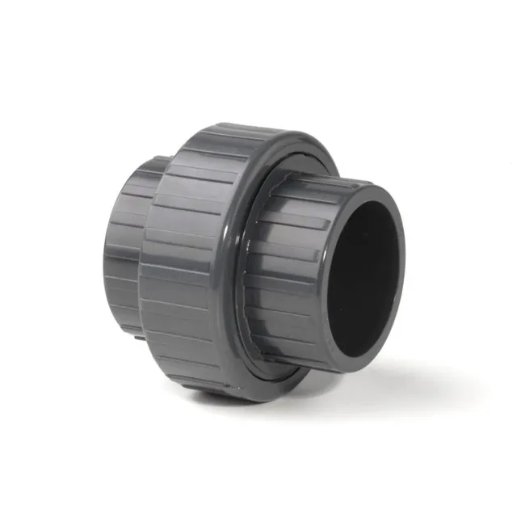
Unlike couplings and standard fittings, pipe unions are more versatile because they are designed to provide an efficient, reusable solution for connecting and disconnecting pipes throughout a system. Pipe unions, in contrast to couplings, which constitute permanent or semi-permanent connections, allow for easy disassembly without cutting or damaging the pipes. This characteristic makes unions ideal for maintenance, repair, or modification work throughout the piping system. Relatively, pipe unions are more useful than standard fittings, as they are better suited for applications where frequent assembly and disassembly are required.
Understanding pipe unions vs pipe couplings: key distinctions
Both pipe unions and couplings are unique components of piping systems, which have specific uses, but understanding each term’s nuances is critical in ensuring the right tool is selected for the job. Not only do they serve the same purpose of linking pipes, but they differ significantly in structure and intent.
1. Design and Functionality:
Pipe unions are created to enable the secure joining of the pipes while permitting easy disassembly. This is made possible by the construction of its three parts, which include a nut, male end, and female end. Couplings, whether single-piece or multi-piece, serve a different purpose. They are designed, best described, to allow permanent or semi-permanent joining of two pipes, with severing the pipes being the only feasible method once it’s installed.
2. Applications:
Pipe unions can be noticed in systems that allow frequent inspections or require components to be replaced easily. For example, their use is common in the water heater zones and pump systems. These areas need part removal frequently. Unlike union couplers, paired couplers are best suited for systems with pressurized piping or piping that encloses underground. These systems require robust, long-lasting joints.
3. Material Choices and Durability:
Common materials for pipe unions and couplings include stainless steel, brass, copper, and PVC, and these materials vary depending on the application. Couplings tend to be reinforced for high temperatures and high-pressure conditions, while unions are more flexible and suited for moderate conditions.
4. Efficiency in Maintenance:
Every technician knows that time is money. In this case, pipe unions make for economical components. Unions allow for quick disassembly and reassembly, which minimizes repair downtime. This stands in contrast to pipe couplings that do not benefit from quick removal using specialized tools, which require an extra investment of time.
These distinctions underscore that selecting between pipe unions and pipe couplings is based on a particular system’s maintenance requirements, pressure parameters, and application type.
When to use a pipe union instead of a standard coupling or fitting
Pipe unions are especially useful in cases where the piping system needs disassembly or maintenance on a regular basis. Other industries like oil and gas, chemical processing, and HVAC systems are heavily reliant on unions because of how easily they connect or disconnect. For instance, depending on the material and union design, operating pressures of pipe unions can be between 1,000 and 3,000 psi, which makes them suitable for high-pressure systems.
Another significant use case for pipe unions is when precise alignment is extremely important. These seals are designed to provide tight sealing with minimum misalignment during installation. Unions do not fetter themselves with male threads or welds, unlike standard couplings. Instead, unions use a two-piece design with a socket or threaded connection, which makes the whole thing a lot easier.
Research shows that businesses that utilize pipe unions reduction in installation and maintenance time by up to 25%, which translates to significant cost especially in large-scale systems. Pipe unions also boast the flexibility of being made from stainless steel, brass, and carbon steel, allowing them to be integrated in systems ranging from potable water to corrosive environments.
Benefits of pipe unions in plumbing systems requiring frequent maintenance
My work became much easier after I started using pipe unions in plumbing systems that are maintained frequently. They enable easy and quick access to disconnection and reconnection of pipes, which saves time and effort during maintenance procedures. Furthermore, their design provides a proper connection that is secure, leak-proof, and minimizes damage or system inefficiency over time.
What materials are commonly used for pipe couplings and fittings?
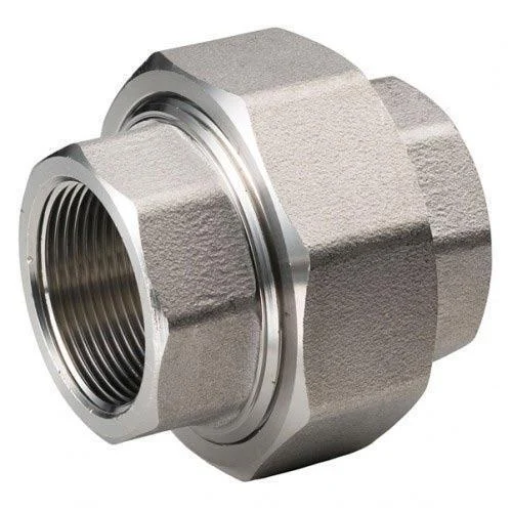
The following are the most commonly used materials in the manufacturing of pipe couplings and fittings:
- Steel (including stainless steel): Able to withstand great pressure and temperature.
- Copper: Resistant to corrosion, which makes it suitable for use in water and gas pipelines.
- PVC (Polyvinyl Chloride): Commonly used in residential plumbing as well as for drainage systems due to its lightweight properties.
- Brass: Ideal for use in the distribution of water because of its resistance to corrosion.
- Cast Iron: Strong material used in heavy-duty plumbing as well as in drainage systems.
- PEX (Cross-linked Polyethylene): Popular due to its flexibility for use in residential water systems.
Every material is chosen according to the unique needs of the piping system for pressure, temperature, and the kind of fluid to be carried.
Materials used in pipe couplings range from carbon steel to plastic options
It is common practice to utilize carbon steel in the creation of pipe couplings due to its strength and high-temperature durability. When used in industrial applications like oil and gas pipelines, fracking, or chemical processing, it needs to withstand extreme conditions and corrosive chemicals. It is ideal for high-pressure systems as well, enduring up to 10,000 psi and temperatures up to 800°F (427°C). Carbon steel equipped pipe couplings used in these applications are often coated to prevent corrosion and further extend their lifespan.
For marine and chemical use, stainless steel is also a popular choice due to its low corrosion rate. The combination of its mechanical strength, long-term reliability, and exceptional corrosive durability makes it a common choice in the food and pharmaceutical processing industries. The cleanliness required in those industries is easily managed by the use of stainless steel. Its durability permits repeated use in high-stress environments.
Conversely, lighter and less expensive materials like PVC (Polyvinyl Chloride) and HDPE (High-Density Polyethylene) can be used where lower mechanical stress and a lesser resistance to corrosion are acceptable. For example, residential and irrigation systems frequently utilize PVC couplings because of their economical pricing and capability to withstand pressures of 300 psi in numerous configurations. Furthermore, HDPE is widely regarded for its exceptional flexibility as well as its resistance to fracture under stress, making the material well-suited for underground or trenchless installations.
The superior antimicrobial properties and thermal conductivity of brass and copper alloys make these materials the ideal selection for plumbing and HVAC systems. These materials have lower corrosion resistance when used in water systems, but can still withstand moderate pressures, providing enduring reliability in residential and commercial setups.
For each material, there are distinct considerations regarding the cost, expected lifespan, and the type of connection systems: threaded, grooved, or welded joints. Selecting the optimal coupling material is a decision that balances optimal performance with safety, taking into account the nature of the fluid being transported, the environmental conditions, and the required pressure ratings.
How material choice affects performance and longevity
The choice effect in a piping system can be severe, considering the performance and the lifespan, as each system has its own requirements to function smoothly. For example, one of the most famous uses of stainless steel piping is because of its ability to resist corrosion, which makes it optimal for transporting water and also chemicals during high-humidity or highly corrosive conditions. Various studies suggest that under the best conditions, stainless steel piping lasts more than 50 years, which reduces maintenance work and expenses in the long run.
Like this, ductile iron is another example that has been used in a water distribution system. It is a blend of both strong and flexible, having the ability to withstand high-pressure conditions while having an average lifespan ranging from 50 to 100 years. Another example of a low-weight material that is economical,l like CPVC or PVC, is a thermoplastic that is used for resisting chemicals or low-pressure applications. In a low-stress setting, PVC has been known to also outperform the benchmarks for lifespan for more than a century.
Nevertheless, there are so many environmental factors that need to be considered. For instance, materials such as carbon steel might be strong in controlled environment conditions, but if not coated or treated, they tend to be more prone to rust and corrosion in flammable or damp places. Data also shows us that materials composed of different types of materials (composite materials) are emerging to blend strength along with corrosion resistance and thermal durability.
Correctly selecting a material as it relates to system design simplifies the challenges of maintenance, safety, and reduces the potential risks associated with operational downtime. Materials in industry will best achieve long-term solutions with high reliability when considering the type of fluids used and the conditions of the environment.
When should you use a coupling versus a fitting in your plumbing project?
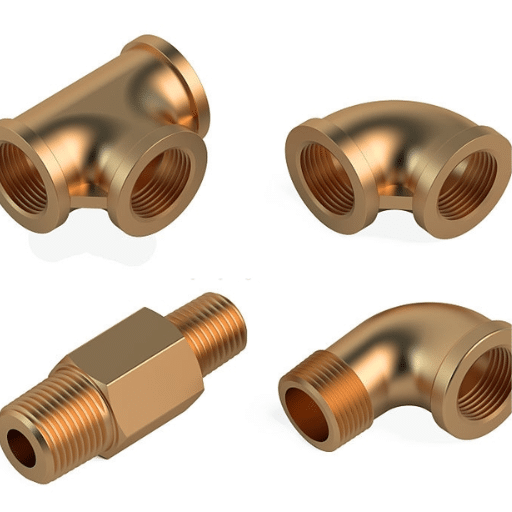
When choosing between a coupling and a fitting while planning plumbing work, knowing their respective functions and advantages is important. A coupling is designed to join two pipes of the same diameter, which allows for a continuous connection that does not leak. It is especially useful in repairs since it is designed to fill gaps in broken or cut pipes. For example, slip couplings are designed to allow some axial movement to make alignment easier, thus making them very useful in emergency repairs.
In contrast, fittings are more specialized because they can redirect the flow of pipes, make branches, or even change from one pipe size to another. For instance, elbow fittings will serve the purpose of changing direction easily, tees are used in splitting the flow, and reducers will connect the two pipes of different diameters. Fitting materials include PVC and stainless steel, and they can be used in different projects because of their versatility.
In the end, the things that set them apart are their functions: couplings work on the connecting and repairing, while fittings change the flow or the direction of the piping system. Knowing the requirements of your project, specifically the type of pipe, size, and flow direction, will help in making the best decision. Ensuring an appropriate selection provides optimal engineering efficiency, durability, and the success of your plumbing application.
Decision factors for choosing between pipe couplings and fittings
Prior to making a decision regarding couplings and pipe fittings, take note of the criteria below:
- Purpose: Use couplings only for connecting or repairing pipes. Use fittings in cases where a change of flow direction, joining pipes of different sizes, or alteration of the system layout is required.
- Pipe Compatibility: Check that the coupling or fitting is proportionate to the material, size, and type of pipes being utilized.
- System Requirements: Analyze temperature, pressure, and flow direction requirements to determine the most suitable choice.
With respect to the factors mentioned, selecting the correct part will enhance the performance and efficiency of the piping system.
Practical applications where couplings are the preferred solution
- Industrial Pipe Systems: Couplings are critical components in oil and gas, chemical processing, and water treatment industries. They offer dependable connections for pipelines that function under high temperature and pressure. For instance, flexible couplings are utilized in vibration or misalignment-affected systems to avert joint stress and leaking.
- Plumbing and Water Distribution: In municipal water distribution systems, Quick-connect couplings are frequently employed for easy maintenance and repair with minimized downtime. Studies show these couplings may cut down assembly time up to 40% in comparison to other methods.
- HVAC Systems: Couplings are involved in the heating, ventilation, and air conditioning systems, where they provide adequate support on pipe connections while allowing for movement due to heating changing the size of the object in the course of its operation. This also optimizes the structure’s performance while alleviating its stress.
- Fire Protection Systems: Coupled In-Line Fire Protection Systems integrates fire grooved couplings, which are regularly used in waterworks and hydraulics because of their fast installation rate, even with excessive water under pressure. Some studies reported that this improves safety and intelligent capture during the assembling of complex interactions like fire sprinkler networks.
- Agricultural Irrigation: Couplings also form an essential part of the irrigation systems as they help maintain a uniform supply of water throughout the large fields. With respect to improved agricultural productivity, camlock couplings allow rapid connection and disconnection.
These pivotal applications underscore the importance of couplings across different fields, highlighting their adaptability while simultaneously enhancing system robustness, minimizing the need for maintenance, and improving operational efficiency.
Scenarios where specific fittings are essential for proper function
Useful components have an impact on the dependability and functionality throughout all systems across various fields. For instance, in fluid transfer systems, the threaded fittings are a must for achieving leak-proof seals in high-pressure pipelines ranging up to 10,000 psi industrial grade constricted pumping. Similarly, quick connect fittings like those employed in manufacturing and agriculture aid in the rapid putting together and taking apart of components, which lessens downtimes by 30% during maintenance activities.
Think about HVAC systems, and the flare fittings are crucial for joining the refrigerant lines. These components have the ability to maintain the system sealed, which is essential for efficiency and to avoid venting the refrigerant. This is especially important since a minor refrigerant leak can lead to a loss in the system’s efficacy by 5% and is inefficient from an environmental perspective.
In addition, compression fittings pose to be useful tools for potable water plumbing systems. These fittings enable the creation of secure fittings without the use of soldering, which takes up too much time and effort. New research indicates that the proficient application of compression fittings can lead to 40% time savings on the whole process of installation on residential houses.
These case studies demonstrate how appropriate fitting selection in diverse applications impacts system performance, efficiency, and even cost savings. In harsh settings, proper fitting selections safeguard system integrity and safety over prolonged periods.
Reference Sources
- “Establishing the Taxonomy of Building Defects Triggered by Moisture Intrusion and Dampness”1:
- Key Findings: This study identifies improper plumbing configurations and faulty waterproofing as significant contributors to moisture-related building defects. It emphasizes the importance of proper coupling and fitting installations to prevent water leakage and structural damage.
- Methodology: The research employed a combination of literature reviews, visual inspections, and case studies to analyze moisture issues in buildings.
- “Application of Fiber Optics in Water Distribution Networks for Leak Detection and Localization”2:
- Key Findings: The study explores the use of fiber optics for detecting leaks in water pipelines, highlighting the role of couplings and fittings in maintaining system integrity. It identifies acoustic-based fiber optics as a promising technology for monitoring pipeline conditions.
- Methodology: A mixed-method approach was used, integrating bibliometric and systematic analyses to evaluate fiber optic applications in leak detection.
- “Plumbing/Piping/Tubing Failures”4:
- Key Findings: This chapter discusses common failures in plumbing systems, including issues with couplings and fittings. It highlights the advantages of modern materials like PEX over traditional piping due to their flexibility and resistance to freezing.
- Methodology: The content is based on forensic engineering insights, providing practical examples and case studies of plumbing failures.
Frequently Asked Questions (FAQs)
Q: What is the fundamental difference between a coupling and a half coupling in pipe connections?
A: A full coupling is a short cylinder with female threads on both ends designed to connect two pieces of pipe with male threads. It creates a straight connection between two lengths of pipe. In contrast, a half coupling is essentially a full coupling cut in half, featuring female threads on only one end while the other end is flat for welding directly onto a pipe or vessel. Half couplings are often used when you need to create a branch connection or an outlet on an existing pipe run without cutting the entire pipe.
Q: How do pipe coupling types vary based on connection methods?
A: Pipe coupling types vary significantly based on their connection methods. Common types include threaded couplings (using pipe threads to secure connections), compression couplings (using compression nuts and ferrules), slip couplings (allowing for thermal expansion), grooved pipe couplings (using grooved ends and gaskets), solvent-welded couplings (for plastic pipes), and reducing couplings (connecting pipes of different diameters). Each type serves specific purposes in piping and plumbing systems, with selection depending on factors like pressure requirements, pipe material, and installation environment.
Q: What distinguishes a pipe coupling and union from other fittings?
A: A pipe coupling creates a permanent or semi-permanent connection between two lengths of pipe or tube by threading, welding, soldering, or using compression. It typically cannot be disassembled without tools or damage. In contrast, a union is specifically designed for easy disconnection and reconnection of pipes without disturbing the piping system. Unions feature three parts: two end pieces that connect to pipes and a union nut that draws them together. This key difference makes unions invaluable in systems requiring periodic maintenance or component replacement, while couplings are used in piping or plumbing where permanent connections are needed.
Q: How do carbon steel pipe couplings differ from those made of other materials?
A: Carbon steel pipe couplings offer superior strength and pressure-handling capabilities compared to other coupling materials, making them ideal for industrial applications with high-temperature and high-pressure requirements. They can withstand more extreme conditions than brass, which is typically used in residential plumbing fittings. While carbon steel provides excellent durability and structural integrity, it is more susceptible to corrosion than stainless steel couplings. Carbon steel couplings are heavier and typically more expensive than PVC or other plastic options, but they provide significantly greater resilience for demanding industrial piping and plumbing environments where safety and longevity are paramount concerns.
Q: What is a reducing coupling, and when would you use one in a pipe run?
A: A reducing coupling is a specialized pipe fitting designed to connect pipes of different diameters in a single straight line. Unlike standard couplings that join pipes of equal size, reducing couplings have one end with a smaller diameter than the other. They’re essential when transitioning from a larger pipe to a smaller one within a pipe run, allowing for flow rate adjustments, pressure management, or accommodation of different system requirements. Reducing couplings are commonly used in piping and plumbing systems when flow needs to be concentrated or when connecting new smaller pipes to existing larger ones without extensive system modifications.
Q: How do coupling vs fitting functions differ in plumbing systems?
A: In plumbing systems, couplings serve the specific purpose of joining two pieces of pipe in a straight line, essentially extending the pipe run without changing direction. They create a connection between two sections of pipe or tube with similar ends. Fittings, on the other hand, represent a broader category that includes couplings but also encompasses components that change flow direction (elbows, tees), adjust pipe size (reducers, bushings), terminate lines (caps, plugs), or provide special functions (valves, traps). The primary distinction is that while all couplings are fittings, not all fittings are couplings – fittings perform various functions beyond simple linear connection in piping and plumbing systems.
Q: What are the advantages of using steel pipe couplings over other materials?
A: Steel pipe couplings offer exceptional strength and durability, making them ideal for high-pressure and high-temperature applications in industrial settings. They provide superior resistance to mechanical stress, vibration, and physical damage compared to plastic alternatives. Steel couplings, particularly those made from carbon steel, maintain structural integrity over decades of service in demanding environments. While heavier and typically more expensive than PVC or other non-metallic options, steel couplings provide greater reliability for critical infrastructure where failure is not an option. Their ability to withstand extreme conditions makes them the preferred choice for steam lines, oil and gas applications, and industrial piping and plumbing where safety concerns outweigh cost considerations.
Q: What methods are used to join threaded pipe fittings to ensure leak-free connections?
A: To create leak-free connections with threaded pipe fittings, several methods are employed. Thread sealants like pipe dope (pipe joint compound) or PTFE tape (Teflon tape) are applied to the male pipe threads before assembly to fill small imperfections and create a water-tight seal. Proper thread engagement is crucial—hand-tightening followed by 1-3 turns with a wrench depending on pipe size. For gas lines and high-pressure applications, pipe compound rated for these conditions must be used. When connecting dissimilar metals, dielectric unions or specialized compounds prevent galvanic corrosion. Proper alignment during installation prevents cross-threading, and appropriate torque application avoids over-tightening that can crack fittings, particularly in plumbing applications with cast iron pipe or brass components.
Q: How do you select the right coupling materials for specific plumbing applications?
A: Selecting the right coupling materials depends on several critical factors. For potable water systems, use lead-free brass, copper, or approved plastics that meet health standards. In high-temperature applications like steam lines or hot water systems, carbon steel pipe couplings or brass are appropriate. For corrosive environments, choose stainless steel, PVC, or specialized alloys depending on the specific chemicals present. Consider pressure ratings—metal couplings typically handle higher pressures than plastic ones. For outdoor or buried applications, use corrosion-resistant materials like PVC, PE, or coated metal couplings. Also consider expansion/contraction needs, code requirements, and budget constraints. The coupling material must always be compatible with both the pipe material and the fluid being transported in your piping and plumbing system.

